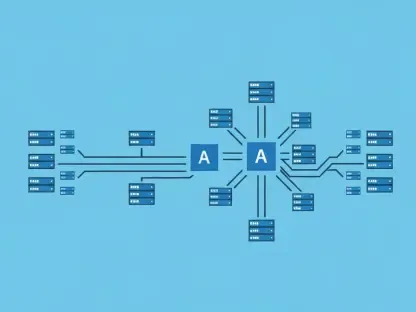In the rapidly evolving field of engineering, leadership must adapt to new trends and methodologies to stay ahead. This article delves into the latest trends in engineering leadership, focusing on observability, the backlash against Agile methodologies, psychological safety, and building autonomous teams. By understanding and implementing these trends, engineering leaders can foster a more innovative and productive environment.
The Rise of Observability in Engineering
From Diagnostics to Insights
Observability has traditionally been used for diagnosing problems within systems. However, its role is expanding to provide broader insights that blend technical performance with business outcomes. Advanced metrics now include user experience indicators such as “rage clicks” and meaningful load times, offering a more comprehensive view of system performance.
Historically, observability metrics were centered around CPU usage, memory consumption, disk input/output, and network throughput. These technical metrics, while useful, provided a limited view of system health. Today, the scope has widened to include factors that directly impact user experience. For example, monitoring the frequency of “rage clicks”—rapid, repeated clicks by frustrated users—can offer vital clues about the usability of a website or application. By integrating these user-centric metrics with traditional ones, companies can achieve a balanced view of both technical and experiential aspects of their systems.
This shift signifies a critical transformation in how engineering teams approach system monitoring and improvement. The transition from purely technical metrics to a more comprehensive analysis that includes user experience means that engineers can now address issues that directly affect end-users. This broader understanding allows for more strategic decision-making and aligns technical efforts with business objectives, ultimately leading to enhanced overall performance and customer satisfaction.
Actionable Insights Over Raw Data
The shift from raw data to actionable insights is crucial. Engineering leaders need to focus on deriving meaningful conclusions from multiple signals, such as page load times and network speeds, to answer broader questions about user experiences and operational efficiency. This evolution enables better decision-making and enhances overall user satisfaction.
While raw data is foundational, it is the extraction of actionable insights that drives real value. For instance, simply knowing that a page load time has increased is less useful than understanding the impact of that delay on user behavior and satisfaction. By analyzing multiple data points together—such as page load times, network latency, and user actions—engineering teams can derive insights that go beyond surface-level observations. This integrative approach helps answer more complex questions like, “How does a 500-millisecond delay in page load affect our conversion rates?”
Advanced analytics and machine learning tools play a vital role in transforming vast amounts of raw data into actionable insights. Leveraging these technologies, teams can identify patterns, predict future issues, and suggest proactive solutions. This transition from reactive problem-solving to proactive improvements is a significant step forward for engineering leadership. It ensures that decisions are data-informed and directly tied to enhancing user experience and operational efficiency, which in turn fosters a more innovative and responsive engineering environment.
The Agile Backlash
Misunderstanding Agile Principles
Agile methodologies have faced growing skepticism, primarily due to a misunderstanding of their core principles. Many organizations misconstrue Agile as a method to speed up delivery rather than a framework for continuous feedback and adaptation. This misalignment with original Agile values has led to widespread discontent.
Agile was intended to foster flexibility, adaptability, and collaboration within development teams. However, when misapplied as merely a speed-enhancing mechanism, its true benefits get lost. This misinterpretation can create unrealistic expectations and pressure teams to prioritize speed over quality. Moreover, the fundamental Agile principles of continuous iteration and user feedback are often overlooked, leading to frustration among team members who feel their voices and insights are being ignored in the rush to deliver.
Further complicating matters is the tendency of some organizations to implement a rigid, one-size-fits-all version of Agile. This contradicts the very essence of Agile, which emphasizes adaptability and evolution based on team-specific needs and feedback. When teams are forced into a standardized mold, the flexibility and continuous improvement that Agile aims to promote are compromised. This misalignment not only causes discontent but can also lead to project failures and decreased morale among development teams.
The Agile Industrial Complex
The commercialization of Agile through certifications and rigid frameworks has diluted its essence. Poorly executed Agile practices offer little value, causing further dissent. Additionally, some Agile coaches, given significant influence within organizations, have provided misguided advice, leading to poorly executed Agile transformations.
The emergence of what some call the “Agile Industrial Complex” has further complicated the situation. The proliferation of Agile certifications and rigid, prescribed methodologies has turned Agile into a commodity, often stripping it of its adaptability. While certifications can provide a foundational understanding, they can also lead to dogmatic application of Agile processes that do not account for the unique challenges and contexts of individual teams. This commodification can result in a tick-box approach to Agile, where the focus shifts from its underlying principles to merely following a set process.
Moreover, the influence of Agile coaches who may be more focused on adherence to process rather than the spirit of Agile can exacerbate these issues. Misguided advice and an overemphasis on certification over practical, hands-on experience can lead to poorly executed Agile transformations. This often results in teams that are disillusioned with Agile, seeing it as another ineffectual management fad rather than a powerful framework for continuous improvement and adaptive planning. Despite the backlash, it’s crucial to recognize that the core principles of Agile—regular, incremental delivery, and continuous feedback—remain integral to effective software engineering.
Psychological Safety and Blameless Post-Mortems
Importance of Psychological Safety
Psychological safety is crucial for engineering teams to thrive. Blameless post-mortems, which focus on learning rather than blaming, are essential for fostering this environment. Good blameless post-mortems establish a clear cause-and-effect relationship without attributing personal blame, encouraging a culture of continuous improvement.
Creating a psychologically safe work environment means ensuring that team members feel comfortable expressing their thoughts and concerns without fear of repercussion. This sense of safety is particularly crucial in engineering teams, where complex problem-solving and innovation are daily requirements. When engineers feel safe to voice their ideas and admit mistakes, it fosters an environment of open communication and collaboration. Blameless post-mortems play a pivotal role in this, as they focus on understanding what went wrong in a given situation and how similar issues can be prevented in the future, rather than assigning blame.
The benefits of effective blameless post-mortems are multifaceted. They not only help teams learn and adapt but also build trust among team members. By carefully analyzing incidents without attributing fault to individuals, organizations can identify root causes and implement systemic improvements. This approach enables a culture where continuous learning is prioritized, and mistakes are seen as opportunities for growth rather than failures. For engineering leaders, fostering psychological safety and conducting blameless post-mortems are essential practices for driving innovation and improving overall team performance.
Challenges in Implementation
Implementing blameless post-mortems can be challenging. Misapplication can result in overly vague reports that fail to identify actionable improvements. It’s essential to balance empathy with accountability to ensure that incident analysis leads to meaningful changes. Success stories, such as the one from Sainsbury’s, demonstrate the benefits of a well-executed blameless post-mortem approach.
The challenge often lies in ensuring that post-mortems remain focused and constructive. When not executed properly, they can become exercises in vagueness, with feedback that fails to identify specific areas for improvement. For instance, vague statements such as “better communication is needed” do little to address the underlying issues. To be effective, the analysis should be detailed, outlining clear cause-and-effect relationships and proposing actionable solutions. This requires a careful balance of empathy and accountability, where team members feel supported rather than targeted.
A well-executed blameless post-mortem not only identifies what went wrong but also how to prevent similar incidents in the future. Organizations that excel in this practice, like Sainsbury’s, have demonstrated significant improvements in both the speed and quality of incident resolution. By shifting from a blame-oriented approach to one focused on systemic improvement, they have managed to reduce incident review times and enhance the effectiveness of their engineering processes. For engineering leaders, mastering the art of blameless post-mortems is a critical step towards building more resilient and innovative teams.
Building Autonomous Teams
Platform Approach
Empowering teams and aligning them around common goals is vital for innovation. A platform approach, such as Sainsbury’s internal Platform as a Service (PaaS), can make compliance and best practices easy for teams. By automating tedious tasks, organizations can incentivize adherence to standards and foster a collaborative environment.
A platform approach facilitates the creation of a structured yet flexible environment where engineering teams can thrive. By offering internal platforms that streamline compliance and encourage best practices, organizations can significantly reduce the administrative burden on their teams. Sainsbury’s implementation of their internal PaaS, for instance, provided a centralized system that automated many routine tasks. This allowed their teams to focus more on innovation and less on compliance requirements. The ease of use and availability of these platforms encourage teams to naturally align their work with organizational standards, thus enhancing overall productivity and collaboration.
The benefits of such an approach extend beyond mere compliance. By providing a platform that supports best practices, organizations can foster a collaborative environment where knowledge is shared, and innovations are easily adopted. This not only improves efficiency but also boosts morale, as teams feel supported and empowered to experiment and innovate. The automated tools and frameworks provided by the platform can also facilitate faster development cycles, enabling teams to deliver value more quickly and responsively. For engineering leaders, adopting a platform approach is a strategic move that can drive both efficiency and innovation within their teams.
The Golden Path
Creating a “golden path” where the easiest way to accomplish tasks aligns with organizational best practices is another effective strategy. This approach must be balanced with giving teams autonomy in decision-making. Dictatorial mandates can stifle innovation, while a collaborative platform approach encourages ownership and engagement.
The concept of the “golden path” revolves around designing a workflow that naturally guides teams towards best practices as the path of least resistance. This means creating an environment where the default options and processes are not only the simplest but also the most effective and compliant with organizational standards. By making it easier to do the right thing, organizations can ensure that best practices are consistently followed without feeling coercive. This approach also leaves room for flexibility, allowing teams to deviate from the golden path when necessary, fostering a sense of autonomy and ownership.
Balancing this approach requires careful thought and execution. While it’s important to provide clear guidelines and a structured path, it is equally crucial to allow teams the freedom to innovate and make decisions. Heavy-handed mandates can lead to dissatisfaction and stifle creativity. Instead, a collaborative approach where teams are encouraged to provide feedback and have a say in how processes are shaped can lead to greater engagement and better outcomes. For engineering leaders, creating and maintaining this balance is key to building autonomous, motivated teams that can drive innovation while adhering to best practices.
Conclusion
In the fast-paced world of engineering, leadership must continuously adapt to new trends and methodologies to maintain a competitive edge. This article explores some of the latest trends shaping engineering leadership today. Key areas of focus include observability, the growing backlash against Agile methodologies, the importance of psychological safety, and the creation of autonomous teams.
Adapting to these emerging trends is crucial for engineering leaders aiming to cultivate a more innovative and efficient workplace. Observability, for example, has become a critical aspect of modern engineering practices. By enhancing the ability to monitor and understand system performance, leaders can make more informed decisions that drive project success.
Similarly, Agile methodologies, once hailed as a cornerstone of effective engineering management, are facing increasing scrutiny. This backlash highlights the need for leaders to be flexible and open to evolving practices that better suit their teams’ unique needs.
Psychological safety is another essential trend. Leaders who prioritize creating an environment where team members feel safe to voice their ideas and concerns can significantly boost team morale and innovation. Finally, building autonomous teams empowers engineers to take ownership of their work, fostering a sense of responsibility and creativity.
By keeping up with these trends, engineering leaders can lead their teams more effectively, driving both innovation and productivity in their projects.









